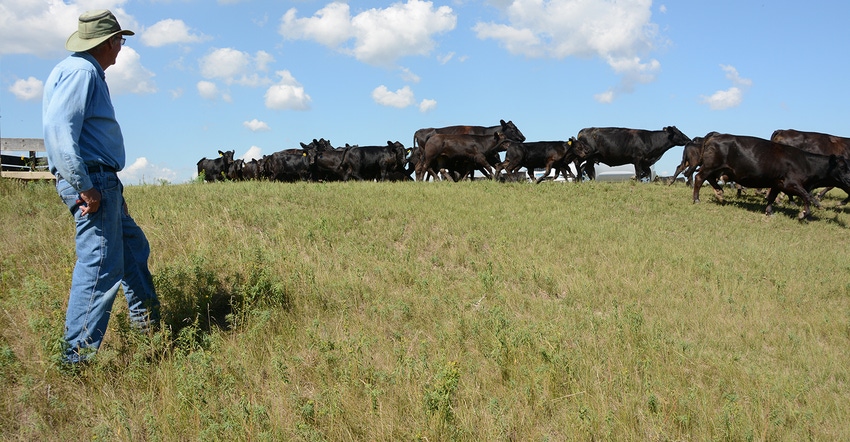November 7, 2017

Will there be a drought again in the Northern Plains next year? No one knows sure. But some farmers and ranchers are making plans for one.
Ken Miller’s strategy is to always be trying to increase forage production. Thirty years ago, Miller, a cow calf producer from Fort Rice, N.D., took an intensive grazing range management course from Allan Savory. Savory advocates that rangeland should be managed to mimic the way the bison grazed the Great Plains. They moved in huge, packed herds and consumed everything in their path: grass, weeds, everything. What they didn’t eat, they trampled. But they moved rapidly. They grazed an area for a short period of time and were gone – perhaps for years.
To create that scenario on a ranch, Miller has been dividing pastures into smaller and smaller units. He now has more than 60 paddocks and most are not more than 20 acres in size. Some are even irrigated. He cell grazes, mob grazes and bale grazes. Concentrating cows and calves so they eat grass, trample grass, grind seeds into the soil, spread their manure and urine, and then move on has does wonders for soil health, Miller says. There’s more organic matter in the soil. There’s more biological life. There are many more different species of plants — Miller has counted more than 100. He also plants full season cover crops for grazing.
“We have tripled forage production,” he says. “This year of course, we didn’t have as much grass as we usually do. But it was just a drought, not a disaster.”
OTHER ARTICLES IN THE SERIES:
3 steps a South Dakota rancher takes to always be ready for dry times.
Research Center makes changes to hang on to every last drop of rain that falls.
You May Also Like




